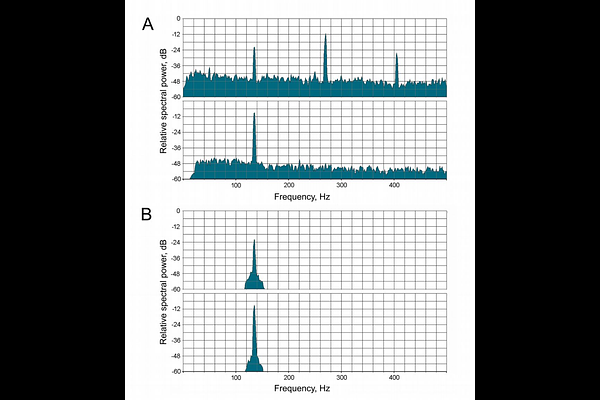High-pass noise suppression in the mosquito auditory system

High-pass noise suppression in the mosquito auditory system
Lapshin, D. N.; Vorontsov, D. D.
AbstractMosquitoes detect sound with their antennae, which transmit vibrations to mechanosensory neurons in Johnston\'s organ. However, their auditory system is exposed to low-frequency noise from external sources, such as convective and thermal noise, and internal sources, such as flight-induced noise, which could impair sensitivity. High-pass filters (HPFs) may mitigate this issue by suppressing low-frequency interference before it is transformed into neuronal signals. We investigated HPF mechanisms in Culex pipiens mosquitoes by analyzing the phase-frequency characteristics of the primary sensory neurons in the Johnston\'s organ. Electrophysiological recordings from male and female mosquitoes revealed phase shifts consistent with high-pass filtering. Initial modeling suggested a single HPF; however, experimental data required revising the model to include two serially connected HPFs to account for phase shifts exceeding -90{degrees}. The results showed that male mosquitoes exhibit stronger low-frequency suppression (~32 dB at 10 Hz) compared to females (~21 dB), with some female neurons showing negligible filtering. The estimated delay in signal transmission was ~7 ms for both sexes. These findings suggest that HPFs enhance noise immunity, particularly in males, whose auditory sensitivity is critical for mating. The diversity in female neuronal tuning may reflect broader auditory functions in addition to mating, such as host detection. This study provides indirect evidence for HPFs in mosquito hearing and highlights sex-specific adaptations in auditory processing. The proposed dual-HPF model improves our understanding of how mosquitoes maintain high auditory sensitivity in noisy environments.